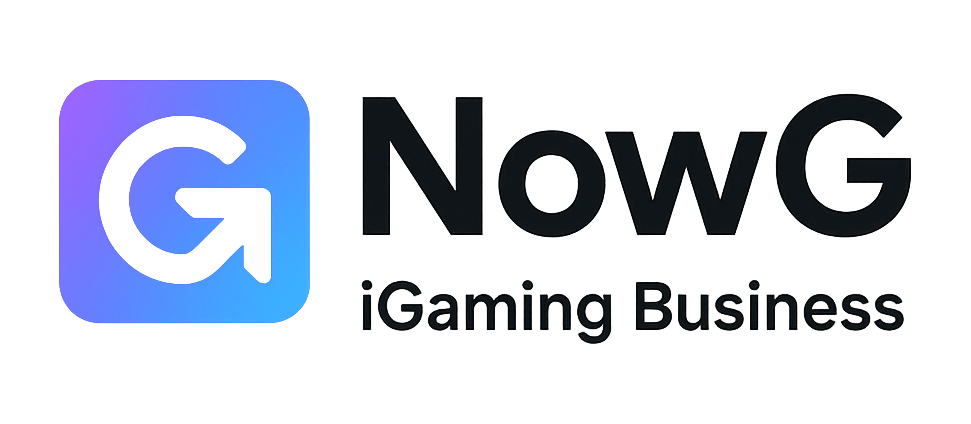Last Updated on November 13, 2025 by Caesar Fikson
What is iGaming? In 2026, it’s the commercial engine behind online betting and casino entertainment—sportsbooks, online casino software, lotteries, poker, crash games, live dealer tables, all stitched together by payments, identity, data, and content licensing.
The category keeps compounding: the global online gambling market was ~$78.7B in 2024 with a runway toward ~$153B by 2030, driven by mobile UX, live-streaming, and real-time personalization. If you own a brand, run an affiliate portfolio, or operate a studio, the question isn’t whether the pie expands—it’s how you capture the slice that compounds.
We at NowG write for executives who measure outcomes in cash flow, not pageviews. You care about CAC/LTV ratio, bonus liability, bet acceptance speed, and how fast your team can ship a new game category without lighting up your fraud alarms. So let’s map iGaming the way an operator, affiliate, or B2B vendor actually thinks: business model first, technology second, regulation as the constraint that shapes both.
iGaming, defined pragmatically
At its core, iGaming is digital wagering delivered through licensed content (casino game providers, sportsbooks, lotteries) with money-in/money-out infrastructure, identity controls, and a compliance wrapper.
The value chain is crowded—operators, platform vendors, aggregators, payment service providers, studios, affiliates, data oddsmakers, ad-tech, and risk vendors all compete to shorten funnel time and raise unit economics. Done right, you get a predictable engine where player engagement compounds and bonus burn doesn’t.
2026: why this year feels different
Three forces keep reshaping your playbook: the shift to live and low-latency formats, the convergence of CRM and CDP (operators acting like modern SaaS), and partner ecosystems where affiliates look more like sophisticated performance agencies than traffic merchants.
Europe’s online share inches higher—online is expected to account for ~39% of total gambling revenue in 2024—and the operators that win are the ones that turn data into pacing: when to surface live dealer tables, when to push crash games, when to cool a bonus ladder that’s overfitting to grinders.
Business model: where the money is (and isn’t)
You sell entertainment under uncertainty. Revenue lines come from net gaming revenue (NGR) after bonuses, fees to game studios/aggregators, payment costs, and affiliate commissions.
The “boring” levers—sessions per active, spin cadence, table switch friction, deposit success rate—move contribution margin more than flashy rebrands. Good marketing makes people curious; good product makes them stay; good risk models keep the house edge intact.
| Layer | Key decisions | 2026 shift |
|---|---|---|
| Content | Casino game selection, jackpot games, live dealer games | Live-first UX, crash volatility tuning, stronger studio curation |
| Monetization | Bonus ladders, VIP tiers, cross-sell from sportsbook → casino | Loyalty + missions replacing blunt bonusing; RTP comms get clearer |
| Acquisition | Affiliate quality, paid search/social, SEO, casino marketing | Attribution clean rooms; fewer affiliates, bigger partnerships |
| Risk | Fraud rules, AML flags, chargeback ops, device fingerprinting | Model-based risk scoring with real-time interventions |
Content remains a moat.
The gaming portfolio that converts across demographics typically blends video slots from Pragmatic Play or BGaming with Playtech casino games for breadth, then anchors high-intent sessions with Evolution Gaming and Ezugi live games. That mix isn’t random; it’s a response to player preferences under different bankrolls and device contexts. The results: higher stickiness per session and smoother cross-sell between casino game types.
Technology stack: fast, modular, measurable
Your users don’t care what framework you run—only whether taps translate to outcomes instantly. Still, under the hood, a 2026-ready stack shares common patterns: modular wallets (including alternative payment methods), near-real-time analytics, a content aggregator with sane SLAs, and a user-friendly casino software front-end that degrades nicely on mid-range Android.
| Capability | Operator need | Affiliate impact |
|---|---|---|
| Real-time data/attribution | Session scoring, bonus throttle, value-based bidding | Smarter rev-share tiers, fraud down |
| Live-stream infrastructure | Advanced streaming technology for live dealer | Better promos on “moments” (multipliers, runs) |
| Risk & trust | Device graphs, synthetic identity checks | Cleaner approvals, fewer clawbacks |
| Personalization | Contextual lobbies by value & intent | Higher EPC, lower churn on post-click journeys |
Live formats are unforgiving. If your stream buffers during peak hands or your chip animations stutter, you hemorrhage trust. That’s why top casino software providers obsess over encoder pipelines, CDN edge selection, and predictive bitrates. Your job is simple: pick partners that make the tough bits look easy.
💡 Pro tip: Track time-to-first-spin and table-switch latency as North Star UX metrics. These two numbers predict session length better than generic “page speed.”
Content strategy: studios, categories, pacing
Studios matter. Pragmatic Play’s cadence, Evolution’s table craft, Ezugi’s market breadth, BGaming’s theming speed, Playtech’s legacy portfolio—curate them like a merchandiser, not a librarian. Inside your lobby, group casino game categories by player preferences: fast-hit crash games for impulse; relaxed roulette games and blackjack games for session time; jackpot games to anchor promotion calendars. The point isn’t more titles; it’s better pacing.
We often see “dump everything into the lobby” as the default. Resist that. Simplify discovery, theme around events, and spotlight “learn to play” overlays for on-ramps. Affiliates benefit too: a clear casino game selection with smart categorization converts more consistently, especially on mobile.
Regulation: constraint and competitive edge
Regulation isn’t just a cost center; it shapes your go-to-market. Mature jurisdictions (UKGC, MGA/Malta, New Jersey DGE, Ontario AGCO/iGO) trade freedom for certainty: tighter marketing rules, audit trails, and data reporting in exchange for payment access, mainstream marketing channels, and brand trust. Europe’s 2024 figures—€123.4B GGR with online’s share climbing—reflect how regulated markets professionalize operations and distribution. EGBA/H2 data. :contentReference[oaicite:2]{index=2}
| Jurisdiction | License model | Marketing strictness | Data reporting |
|---|---|---|---|
| UK | Single-site license per operator | High | ✅ |
| Malta (MGA) | B2C + B2B framework | Medium | ✅ |
| Ontario (AGCO/iGO) | Regulated private market | High | ✅ |
| New Jersey (DGE) | State license via land-based partner | High | ✅ |
| Curacao (reformed) | New licensing categories | Medium | ◻️ (evolving) |
Where to play first? Go where your media and payments clear fastest. If you’re new, consider “learn-to-operate” markets that allow controlled launches with verified suppliers and reasonable timelines. Affiliates: match your content to the regulatory online gaming experience—your landing pages should mirror what a licensed operator can actually offer in that territory.
Acquisition: smarter partners, cleaner data
Affiliate marketing in 2026 looks more like enterprise performance media. The old model of scattershot links and inflated last-click credit fades as operators adopt multi-touch or position-based attribution, dedupe paid-social view-through, and push partners into value-based deals. That’s good for both sides: lower fraud, clearer LTV, fewer disputes.
For your iGaming business, the take advantage of is in creative that teaches. “How-to” for new game types, transparent RTP and volatility explanations, and live dealer walkthroughs reduce post-click abandonment. Build small tools—calculators, glossaries, hand odds—to boost dwell time and email capture. We’ve watched these beat generic banners, again and again.
💡 Pro tip: If you’re switching attribution models, run a 6–8 week overlap where both models calculate payout. Use the delta to repaper partner agreements without blowing up trust.
Operations: metrics that actually predict profit
Measure what predicts—not just what reports. Watch deposit approval rate, time-to-first-spin, session depth, live table dwell, bonus-to-NGR ratio, and fraud score distribution. Track “mission completion” for education-driven funnels. Tie promos to clear behavioral intents (new game try, cross-sell to live, jackpot ladder checkpoints) rather than blanket giveaways.
We favor two dashboards: executive (cash-centric views: NGR, bonus liability, contribution margin) and product (latencies, crashes, table switches, lobby click maps). If those trend green, revenue follows.
Hypothetical scenario: the attribution switch that saved a quarter
Picture a mid-market operator plateauing at 40k monthly actives. Acquisition is “fine” but NGR per active keeps slipping, and finance suspects bonus abuse. We at NowG audit the funnel: last-click attribution overcredits a handful of affiliates whose traffic arrives after paid social impressions. CRM also fires generic reload bonuses that attract grinders and same-device multi-accounting.
We roll out a position-based model (40/20/40), feed creatives into a CDP, and set a mission-based onboarding (roulette basics, live dealer etiquette, slot volatility explainer). Fraud scoring moves to model-based rules, elevating device anomalies and rapid bet-pattern switches. Within one month, payout shifts toward partners driving first-touch discovery and goal completion. Bonus liability normalizes. Cross-sell from sportsbook to live casino improves 18% on targeted cohorts. Same media budget; radically cleaner economics.
Have you considered the downstream impact of switching attribution without a partner rehearsal?
Here’s the bottom line: shadow-model first, then renegotiate. Transparency prevents fires.
Choosing software: stack, studios, and speed
If you’re evaluating online casino software and broader casino software solutions, prioritize speed to integrate studios (Pragmatic Play, BGaming, Evolution Gaming, Playtech, Ezugi), wallet orchestration, and analytics flexibility. Your “best online casino game software” is the one your team can operate without heroics—latency stable, reporting trustworthy, content contracts sane. Cheap platforms become expensive when outages hit Friday nights.
For early-stage tests—or content marketing—free casino software and free online casino software are tactically smart. Prototype the online casino program flow, test casino game offerings, collect qualitative feedback, and harden your launch checklist. When your funnel sings, switch on paid content and tighten your SLAs.
2026 trends to plan for
Live keeps eating lobby share. Table streams fuse with creator-style commentary; micro-missions turn passive viewing into participation. Crash formats and novelty games spread because they compress time to excitement. On the back end, machine learning drives risk and CRM: you’ll see earlier interventions, more personalized messaging, fewer “one-size-fits-all” reloads. Affiliates who bring tools and education (not just traffic) become preferred partners.
- Real-time data contracts between operators and top partners (shared KPIs, faster disputes).
- Studio curation over volume; fewer, better titles in front of the right audience.
Frustrating when promising campaigns plateau unexpectedly, isn’t it?
When that happens, it’s almost always pacing (too much friction) or targeting (wrong context for the creative). Fix those first; the rest quiets down.
💡 Pro tip: In live dealer, measure “dealer handoff dwell” (time users linger after a dealer change). If it dips, you’ve got a stream consistency issue or the wrong table mix in rotation.
Final thought
iGaming in 2026 rewards teams that move fast, measure honestly, and curate ruthlessly. Keep your tech modular, your partners aligned to value, and your content paced to human attention—not dashboards. Adaptation is the only permanent edge.
Try NowG’s free tools to prototype funnels, sanity-check payouts, and pressure-test your product ideas before you scale.
FAQ
What exactly falls under iGaming?
Digital wagering verticals such as online casino (slots, live dealer, table games), sports betting, poker, crash games, and lotteries delivered via licensed platforms with payments, identity, and risk controls.
How is iGaming different from online casino?
Online casino is a subset of iGaming. iGaming also includes sportsbook, poker, lotteries, crash games, and other chance-based formats offered online.
Which game providers should I prioritize?
Prioritize studios that match your audience: Evolution and Ezugi for live, Pragmatic Play and BGaming for slots agility, Playtech for portfolio breadth. Curate for pacing, not just volume.
What tech matters most in 2026?
Low-latency live streaming, modular wallets, real-time attribution, model-based risk scoring, and a user-friendly front end that performs on mid-range devices.
Do I need to worry about regulation in every market?
Yes, but the depth varies. Mature markets like the UK, Malta, Ontario, and New Jersey require stricter marketing and data reporting; others are evolving. Plan go-to-market around payments and media access.
What KPIs actually predict revenue?
Deposit approval rate, time-to-first-spin, table-switch latency, session depth, bonus-to-NGR ratio, and fraud score distribution outperform vanity metrics.
Are free casino software tools useful for operators?
Yes. Use free or low-cost demos to test flows, educate users, and collect qualitative feedback before committing to paid content and full-scale integration.




